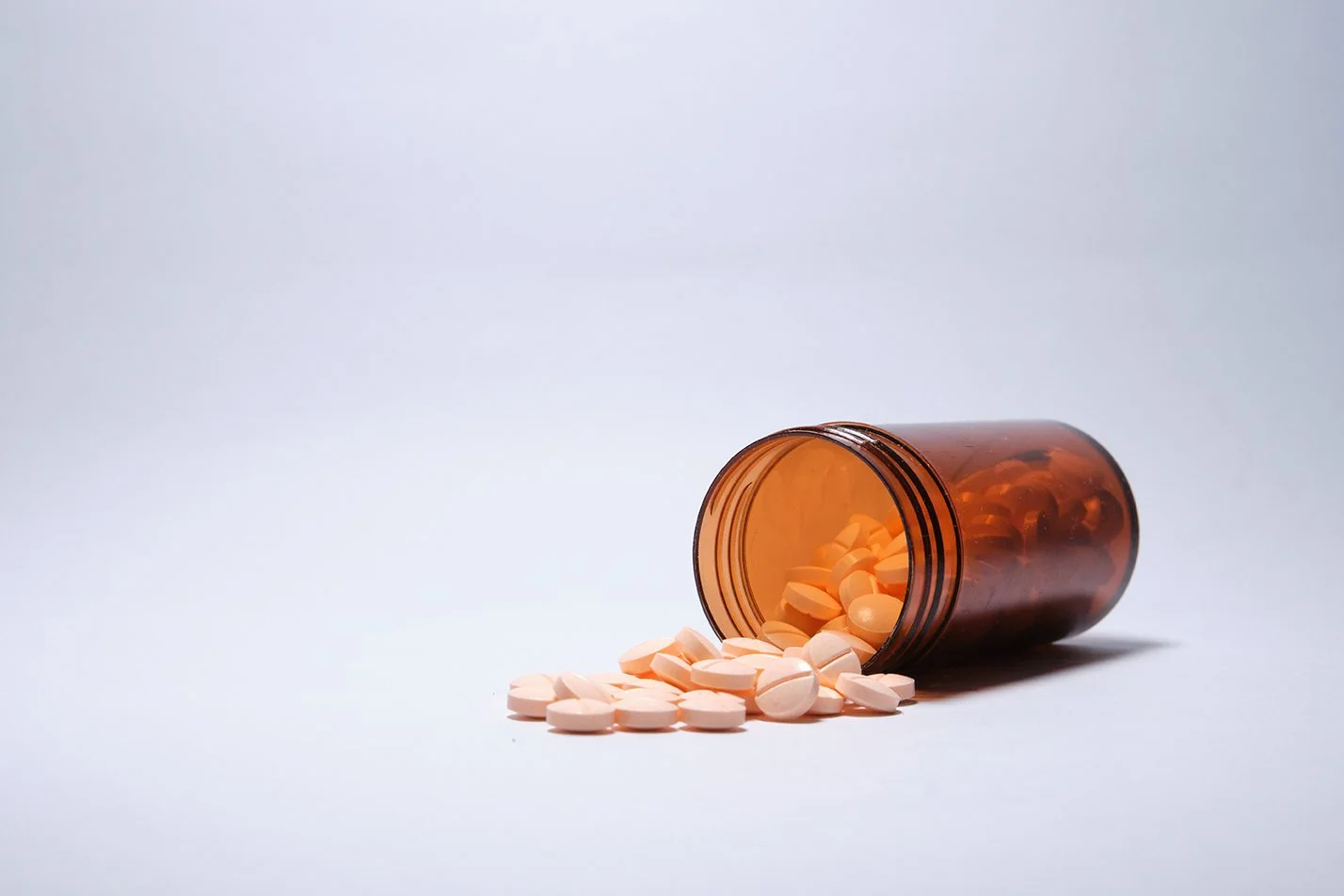Dextroamphetamine
Common Trade Names: Dexedrine, ProCentra, Zenzedi

Dextroamphetamine is a synthetic drug that belongs to a class of drugs known as central nervous system stimulants. It induces the release of the “feel-good” hormone dopamine and then prevents its absorption so that it stays longer in the body. This causes an individual to feel pleasure, motivation, and other positive emotions for longer.
Dextroamphetamine is often prescribed for treatment of attention deficit hyperactivity disorder (ADHD). However, it is also often abused because of the pleasurable effects it engenders. It is classified as a Schedule II substance under the drug scheduling system described by the U.S. Controlled Substances Act, which means it carries a high potential for abuse and dependence.
How Is Dextroamphetamine Used Medically?
Dextroamphetamine has two U.S. FDA-approved uses:
- Treatment of ADHD in adults and children between 3 and 16
- Treatment of narcolepsy in adults and children aged 6 and older
For ADHD, dextroamphetamine helps minimize symptoms such as:
- Moderate to severe distractibility
- Short attention span
- Hyperactivity
- Emotional lability (rapid and exaggerated changes in mood)
- Impulsivity
Off-label, dextroamphetamine is used for:
- Treating patients who have experienced cerebrovascular accidents
- Improving motor function in patients with ischemic stroke
However, the use of dextroamphetamine is discouraged if the patient fulfills the following conditions:
- Is experiencing agitated states
- Has advanced arteriosclerosis (thick and stiff arteries resulting in restricted blood flow)
- Has symptomatic cardiovascular disease
- Has glaucoma (an eye condition that damages the optic nerves)
- Has history of drug abuse
- Has hypersensitivity or idiosyncrasy to amphetamine or other such product components
- Has hyperthyroidism (overactive thyroid)
- Has moderate to severe hypertension (elevated blood pressure)
Pregnant women are also advised against taking dextroamphetamine, as the drug has been found to cause issues like low birth weight and biliary atresia (blockage in the tubes that carry bile from the liver to the gallbladder) in infants. Similarly, dextroamphetamine isn’t recommended for breastfeeding women because the drug is excreted in breastmilk. Doctors should prescribe an alternative medication or ask their patients to stop breastfeeding while the latter are taking dextroamphetamine.
How Do People Abuse Dextroamphetamine?
Most people who abuse dextroamphetamine usually increase the dosage or take the drug without a prescription. They also open the capsules and crush the contents to snort it directly or dissolve it in water and then inject it.
Some people believe that the drug can be used to enhance memory and improve concentration, which is why it has been historically abused by individuals who are studying and taking exams. There are also people who take dextroamphetamine to improve athletic performance because it can decrease reaction time and delay fatigue.
Drugs That Interact With Dextroamphetamine
Dextroamphetamine has been found to:
- Increase the effects of stimulants and antidepressants
- Decrease the effects of sedatives and depressants
If you are taking any of the medications or supplements listed below, you may experience unwanted side effects.
- Gastrointestinal acidifying agents: Substances like guanethidine, reserpine, glutamic acid HCl, ascorbic acid, and fruit juices may inhibit the absorption of amphetamines like dextroamphetamine.
- Adrenergic blockers: The action of adrenergic blockers may be inhibited by amphetamines.
- Tricyclic antidepressants: The action of tricyclic antidepressants may be enhanced by amphetamines.
- MAO inhibitors: MAOI antidepressants can delay amphetamine metabolism. This can make amphetamines like dextroamphetamine more potent.
- Antihistamines: Amphetamines may offset the sedative action of antihistamines.
- Antihypertensives: Amphetamines may nullify the hypotensive action of antihypertensives, making them less effective at lowering blood pressure.
- Chlorpromazine: Chlorpromazine can counteract the central stimulant effects of amphetamines.
- Ethosuximide: Amphetamines like dextroamphetamine may delay absorption of ethosuximide in the intestine.
- Lithium carbonate: This substance may inhibit the stimulatory effects of amphetamines.
- Meperidine: Amphetamines may increase the analgesic effect of meperidine.
- Norepinephrine: The adrenergic effect of norepinephrine may be potentiated by amphetamines.
- Phenobarbital: Amphetamines may slow down the absorption of phenobarbital in the intestine.
- Phenytoin: Amphetamines may slow down the absorption of Phenytoin in the intestine and create synergistic anticonvulsant effects.
- Propoxyphene: Fatal convulsions can occur among individuals who overdose on propoxyphene and whose CNS stimulation is heightened because of amphetamine use.
- Veratrum alkaloids: Amphetamines can make veratrum alkaloids less effective in lowering blood pressure.
Why Does Dextroamphetamine Present a Risk for Addiction?
Dextroamphetamine is particularly prone to abuse because of its useful or pleasurable mental and physical effects, such as enhanced concentration, improved focus, and even increased muscle strength.
It’s important to note that some studies have shown that those who receive stimulant therapy for ADHD since childhood actually have a reduced risk of developing substance abuse during adulthood. However, those who self-administer dextroamphetamine and similar drugs tend to exhibit an increased risk of developing addiction.
What Are the Side Effects of Dextroamphetamine Use?
Like other medications, dextroamphetamine use may be associated with a wide range of side effects even when therapeutic doses are taken. These include:
- Headache
- Insomnia
- Weight loss
- Increased blood pressure
- Decrease in appetite
- Dry mouth
- Mood swings
- Abdominal pain
More serious side effects include the following:
- Seizures
- Stroke
- Myocardial infarction
- Cardiomyopathy
- Stevens-Johnson syndrome
- Hypersensitivity reaction
- Toxic epidermal necrolysis
- Manic symptoms, emotional lability, and behavior changes
What Are the Long-Term Effects of Dextroamphetamine?
Rarely heavy users of dextroamphetamine may develop psychosis. Patients may also experience difficulties in sleeping and extreme weight loss.
Symptoms of Dextroamphetamine Overdose
Some of the most common symptoms of a dextroamphetamine overdose include:
- Aggressive behavior
- Blurred vision
- Coma
- Confusion
- Dark red or cola-colored urine
- Depression
- Diarrhea
- Dizziness
- Fainting
- Fast breathing
- Fever
- Hallucinations
- Irregular heartbeat
- Muscle weakness or aching
- Panic
- Restlessness
- Seizures
- Stomach cramps
- Tiredness or weakness
- Uncontrollable shaking of a part of the body
- Upset stomach
- Vomiting
Signs of Dextroamphetamine Addiction
Dextroamphetamine is listed in the U.S. federal drug scheduling system as a Schedule II substance, which means it carries a high risk for abuse and dependence. Addiction to this substance is also very possible, especially when it is taken in high doses over an extended period of time. When a person becomes addicted to dextroamphetamine, they become unable to control their use of the drug even if it causes negative consequences in their life.
The Fifth Edition of the Diagnostic and Statistical Manual of Mental Disorders (DSM-5) lists 11 criteria for substance use disorders (SUD), including that which may be caused by use of stimulants like dextroamphetamine. The symptoms are as follows:
- Taking dextroamphetamine in higher doses for an extended period of time or for longer than intended
- Being unable to stop using dextroamphetamine despite wanting to
- Spending a lot of time trying to get or use dextroamphetamine, or recovering from use of it
- Feeling intense cravings for dextroamphetamine
- Being unable to fulfill or manage commitments because of dextroamphetamine use
- Continuing to use dextroamphetamine despite the relationship problems it causes or might cause
- Being unable to attend to important activities because of dextroamphetamine use
- Using dextroamphetamine even if it puts you in danger
- Using dextroamphetamine despite exacerbation of physical or psychological conditions
- Tolerance to dextroamphetamine, characterized by the need to take higher and higher doses of the drug to achieve or maintain its desired effects
- Developing withdrawal symptoms after abrupt cessation of dextroamphetamine use
Signs of Dextroamphetamine Withdrawal
Stimulant withdrawal symptoms may develop among those who take dextroamphetamine after abrupt termination of use and following chronic use of the drug. Some of the most common withdrawal symptoms associated with dextroamphetamine dependence are:
- Dehydration
- Hunger
- Fatigue
- Anxiety
- Depression
- Poor memory
- Insomnia
- Sleep disturbances
- Irritability
- Extreme frustration or paranoia
- Hyperactivity
- Personality changes
Remember that anyone who uses dextroamphetamine for a prolonged period, even at prescribed doses, can still develop a dependence on the drug. However, being dependent on a drug doesn’t necessarily mean you are also addicted to it. It simply means that your body has become used to the substance, and as such, it will not be able to function properly without it.
To avoid potentially dangerous dextroamphetamine withdrawal symptoms, visit your doctor or seek help from a medical detox facility immediately. This way, you can be prescribed with a tapering schedule so you can be gradually and safely taken off the drug.
Dextroamphetamine Detoxification
It can be very difficult and dangerous to manage dextroamphetamine withdrawal symptoms on your own. For your own safety, you need to go through a proper medical detoxification program. Aside from ensuring your safety and comfort as you deal with the symptoms of withdrawal, a detox program will also ensure the elimination of dextroamphetamine from your body and reverse the stimulant dependence. Here are just some of the things you can expect:
- The detoxification process usually begins with the gradual discontinuation of dextroamphetamine over several weeks. You will receive lower and lower doses of the drug, until you can live day-to-day without dextroamphetamine.
- Over the course of the detox process, you may also be given IV fluids and nutritional supplements to restore your health, as well as medications to deal with symptoms like insomnia, anxiety, and depression.
- There will be medical professionals who will keep track of your progress and provide the support and motivation you need to complete your detoxification period.
Rehabilitation and Treatment of Dextroamphetamine Addiction
While treating dextroamphetamine use disorder can be challenging, it’s not an impossible task. Professional addiction treatment programs are widely available across the United States, with patients having the option to choose between two main types of setups:
- Outpatient dextroamphetamine addiction treatment: If you have a mild case of addiction with less severe symptoms, outpatient rehabilitation may be an appropriate option. When you choose this setup, you can still go to work or school and essentially maintain your normal daily routine. The only difference is that you will be required to attend therapy and counseling at your chosen treatment facility. Outpatient rehab is also ideal for those who have a strong support system at home and in their community.
- Inpatient dextroamphetamine addiction treatment: Conversely, inpatient addiction treatment would be the better choice if you or your loved one has severe addiction or has had a history of non-compliance to outpatient addiction treatment protocols in the past. In an inpatient setup, you will stay in the rehabilitation facility for the entire course of the treatment program. It’s more intensive, usually combining a variety of interventions with constant monitoring and supervision from medical professionals.
When you’re undergoing treatment for stimulant abuse, you may be exposed to psychosocial interventions like cognitive behavioral therapy, relapse prevention therapy, motivational interviewing, contingency management, and brief interventions, which have also been found to be effective in treating many other types of substance use disorders.
In particular, individuals who misuse stimulants appear to benefit from brief interventions in terms of reducing drug use and increasing abstinence levels. Brief interventions consist of counseling techniques that are aimed helping individuals identify and recognize their problem, and then motivating them to take action.
Find the Right Addiction Treatment Program for You
Dextroamphetamine addiction is a complex condition but it can be treated with the help of a professional rehabilitation and treatment program. Seek help today and take that first step in your journey toward a drug-free life. Contact Better Addiction Care at (800) 429-7690 to speak to a recovery support advisor, who can help you check your insurance coverage for drug addiction treatment. They can also help you look for other financing options, just in case you don’t have insurance.
Better Addiction Care also has partner treatment centers across the country. Our advisors can put you in touch with them, and even help you determine which ones would be the most suitable for your unique needs.
A Brief History of Dextroamphetamine
The amphetamine molecule exists in two active forms: the dextro- and levo- isomers. Both isomers were synthesized in 1937 by the American pharmaceutical company Smith, Kline, & French, and in the same year, dextroamphetamine was introduced into the market under the brand name Dexedrine. The distribution and sale of Dexedrine was unrestricted until 1939, when it was announced that Dexedrine had become a prescription drug that could be only obtained either through a medical prescription or by signing the Poison Register.
The U.S. Food and Drug Administration approved the use of Dexedrine for the treatment of narcolepsy in the 1960s. In 1976, Dexedrine Spansule, which was made specifically for the treatment of ADHD, also obtained its US FDA approval. Through the 1990s, several more pharmaceutical companies began manufacturing and selling dextroamphetamine.







